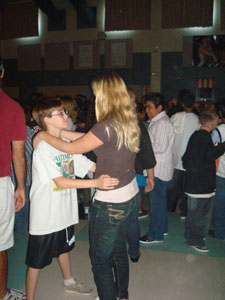There are several thingies (......that's a technical economic term) that are happening right now that all link together in some form to drive components and the present direction in the wine business. Since this is a blog though, and blogs are generally top of mind and brief, discussing the state of anything is going to either violate the
Constitution of the Blogosphere or the tenants of mildly meaningful research. Instead, I'm going to leave out a pantload (......that's another technical economic term) ... of discussion topics such as demand for wine, and go with the top 4 thingies worth pondering at this point in the year.
- The first thingy is water. There isn't any as the video above portrays. That's not good. And it's not just a Central Valley thingy. This water thingy is running throughout the Ag. and wine industry and will only get worse.
- Second is the heat wave from the past week. Early discussions suggest the heat will reduce expected crop size by 10% plus or minus due to sunburn from the recent record heatwave. A related issue vis-à-vis supply is the size of the world harvest in the Southern Hemisphere.
- Third is rising interest rates. That does all kinds of thingies to the wine business.
- Fourth: the world is shrinking and so is the market share for US produced wine.
 |
Even Edyie Gorme Knows it |
Let's start with the last point. In May I saw an
article in the Modesto Bee that said Gallo is launching a wine with juice from four continents. Because of the interwebs and the increased speed of communication the world keeps getting smaller every day and that continues a decade long impact on wine making and wine sales. It wasn't that long ago getting bulk wine from foreign sources wasn't really possible in any measure. We tried that in the late 90's when we were really short winegrapes but it didn't really take off. In fact it probably set Chile's reputation in the USA back a decade. Today, the issue is more price instead of grape supply. When the big guys can save a penny, they pick up a phone and buy juice like it was crude oil, and have it shipped in to fill supply gaps and lower the overall cost of varietal blends. It hits the dock, and the next day its in the tanks for blending and bottling. Back in the day, that would have been wine that was produced from the Central Valley.
 |
I'm Channeling Milton Friedman ........ |
Rising interest rates. I
recently wrote in this Blog about the Feds actions signaling the end of quantitative easing and what that means for the wine business. Never in the history of the world has there been such a coordinated effort by the worlds Central Banks to pump in liquidity and try to stop world economies from falling into a global slide. That said, each of the Central Banks have also been operating in self-interest too. Its just their interests seemed to have all aligned over the past 5 years. So what happens when self-interest at the Central Bank level diverges? We end up with uncoordinated policy leading to surprises and lots of finger pointing from other countries who don't agree with a sovereign country's approach to manipulating their currency to their own benefit.
What is clear at present is the US Economy is ahead of world economies in recovering. As our domestic interest rates rise, foreign currencies depreciate unless they increase their own rate structures to attract capital inflows. If they don't they lose in the
carry trade translation. The expectation in Europe should be to do nothing and let their currency sink versus the dollar so their exports to the US have a rate advantage. But there are many who expect to see European rates rise "in sympathy." I'm doubting that as of this writing. My guess today is we see the US dollar strengthen across a basket of currencies leading to cheaper imports overall, and that keeps our purchasing power up at the consumer level, and inflation contained. The problem, is a strengthening dollar equals cheaper wine imports, for both bottled and bulk wine.
 |
My Akward First Dance |
The heat wave is part of a larger discussion on grape supply. Its hard to get a firm grasp on where that is. We took an stab at that subject
earlier in the year in this Blog. The upshot in that post .... after treating my readers to intimate details of
my first dance in 7th grade, is that growers and producers have different interests and benefit from fanning the flames of over or under supply. Once we get into late July though, the picture starts to become a little more clear and pure speculation starts to give way to partial reality. We wrote about that very thing last year when we asked,
"Is there really a grape shortage?" When we wrote that, the early year consensus was we were short on grapes, but the pre-harvest read last year suggested something else was going to happen and we ended with a record crop. This year the discussion of a large crop has dominated the early discussion, and at the same time growers have been holding out for higher prices and getting them early in the season. That doesn't make sense from a current year perspective if we are long again this year. But there are two parts to the grape and bulk business, the current outlook and the long-term trend.
 |
Turrentine Bulk Volumes |
The growers are looking at the long term position which is trending to shortage or is already short in many price points and varietals. The short term trend in grapes is a little different. The recent heat wave it appears has had an impact on many growing areas and crop losses have been discussed in the 10%-15% range in many circles. Also worth considering is tanks are still brimming after the record 2012 harvest and producers aren't really forced to fill short term needs today. More likely they will want to make sure they have tank space and sell down some of their excess wines creating an odd collision of a longer current bulk market, and a shorter long term market. As an aside,
recent press out of Argentina and
Australia suggest good harvests, some of which will be certain to hit our shores. That also has to play into the discussion. What I take away is the current grape supply is surprisingly a little long, but the long term supply is going to be short.
 |
Drought might be a crack in California's Recovery |
Last thing to note is water. Water is something (....not a thingy in this case) that gets plenty of discussion in the San Joaquin as noted in the above video. The farmers there almost never get more than 50% of their allocation anymore and have salt issues to deal with from ocean intrusion into the Bay. The Federal Government knew about the drainage problem when they put the Federal Water Project together but they never did anything about it and still aren't - unless you count
Governor Moonbeam's Peripheral Canal II attempt as a Federal plan. In any case, it does bring in the specter of Climate Change which we covered in a earlier blog titled
Bovine Excrement & Global Warming (are you getting tired of the gratuitous hyping of my blog yet?) ..... anyway, the bottom line is whether you are a believer in climate change or not, you have to believe we are experiencing interesting weather and can't help but recognize that we live in an arid state that has increasing demands from population expansion and increasing legislation surrounding water use. That factor is increasing in importance each year and will have an impact on domestic supply.
 |
The Ghosts from Italian Swiss Colony say... |
So ........ all that said, where are we mid-year?
- It looks like harvest is trending to be normal to maybe slightly above normal.
- Long term supply is going to be short with normal harvests in the next few years.
- World supply seems enhanced by good harvests in the Southern Hemisphere.
- Rising interest rates will strengthen the US currencies leading to cheaper imports which does have an impact on our wine growing brothers and sisters in the Central Valley in particular, especially when water - or the lack of it cuts into supply, and the damage from the just passed heat wave is factored in to the equation.
- Grape supply and juice seems adequate if not a taste long for now based on last year's harvest and and expected average to above average return this year, but still should be short-ish going out for the next few years.
- There is every reason to believe imports will continue to get a larger share of the US consumer dollar.
Its a lot to cover for a blog and I know that I'm hanging on a thread by bloviating on a blog but that was pithy and doesn't begin to really cover all that is going on in this wonderful business in which we work. We will have a more complete view after doing our annual Wine Conditions Survey in October this year. We hope you will participate in that effort.
Please ping me if you want to participate in the annual Wine Conditions survey. We normally have between 500 - 700 wineries participate in exchange for the consolidated results.
So ... what are your views at mid-year? Please sign in (with a name please or a pseudo-name if you prefer), and share your own thoughts with the forum about what you are seeing at this point in the season, what you find of interest or any thingy you think I have wrong.
 Anyway ... this year we will be releasing the 2014 Annual Wine Industry Report in January. Before I can write the report, there's a lot of research that has to be done. That process starts with the Annual Wine Conditions Survey. The survey gets us very interesting observations such as the chart to the left that shows Millennials really don't move the needle on fine wine purchases, but Gen X'ers do.
Anyway ... this year we will be releasing the 2014 Annual Wine Industry Report in January. Before I can write the report, there's a lot of research that has to be done. That process starts with the Annual Wine Conditions Survey. The survey gets us very interesting observations such as the chart to the left that shows Millennials really don't move the needle on fine wine purchases, but Gen X'ers do.  I would like to ask your winery to participate in the 2014 Wine Conditions Survey. It takes less than 10 minutes. The survey opened last Friday and was sent to 5,000 wineries throughout the US with very good initial participation thus far. There are just 15 survey questions, 4 of which are identifiers such as the region where you produce wine. The remaining 11 core survey questions are geared at understanding vintners' challenges in the present operating environment. We condense the results and those comments then return results, charts, and detail in a non-identifiable manner so winery owners and operators can get a better feeling for what your peers see. To get a better sense of what you get for your participation, here is a link to what we delivered last year: [LINK].
I would like to ask your winery to participate in the 2014 Wine Conditions Survey. It takes less than 10 minutes. The survey opened last Friday and was sent to 5,000 wineries throughout the US with very good initial participation thus far. There are just 15 survey questions, 4 of which are identifiers such as the region where you produce wine. The remaining 11 core survey questions are geared at understanding vintners' challenges in the present operating environment. We condense the results and those comments then return results, charts, and detail in a non-identifiable manner so winery owners and operators can get a better feeling for what your peers see. To get a better sense of what you get for your participation, here is a link to what we delivered last year: [LINK].  Many of the AVA's encourage their memberships to participate since they receive their own gratis bench marking reports. You might see an email in the next few days from your own association so don't think we are spamming you. If you are on the mailing list, you will get one 'last chance reminder' from us and that's it. We never add people to mailing lists, and never use the survey as a tool for marketing.
Many of the AVA's encourage their memberships to participate since they receive their own gratis bench marking reports. You might see an email in the next few days from your own association so don't think we are spamming you. If you are on the mailing list, you will get one 'last chance reminder' from us and that's it. We never add people to mailing lists, and never use the survey as a tool for marketing.






















